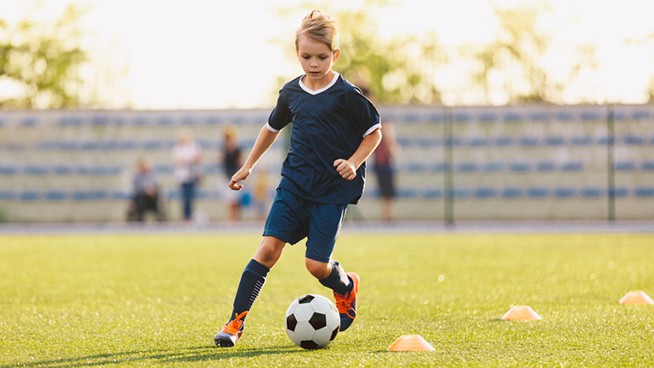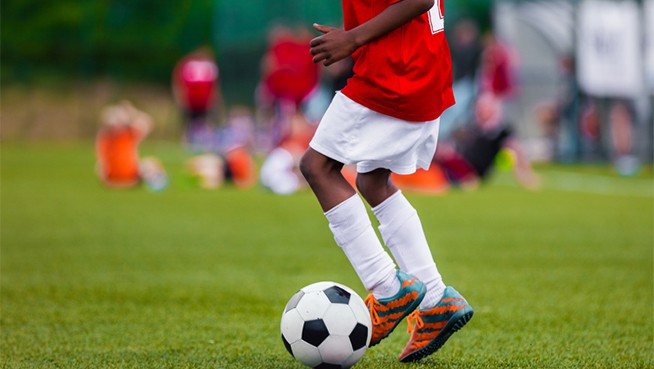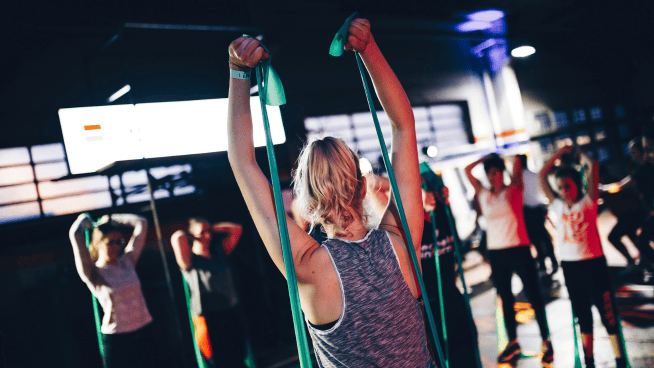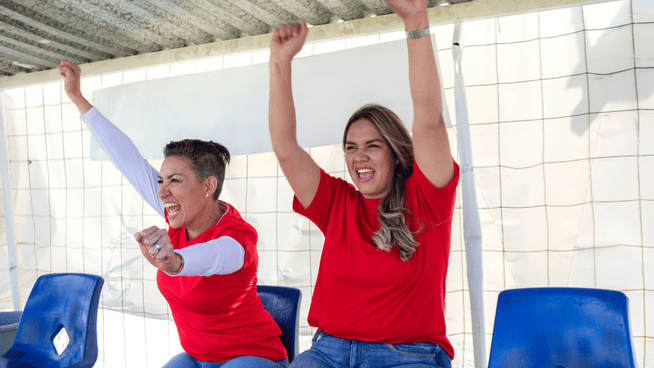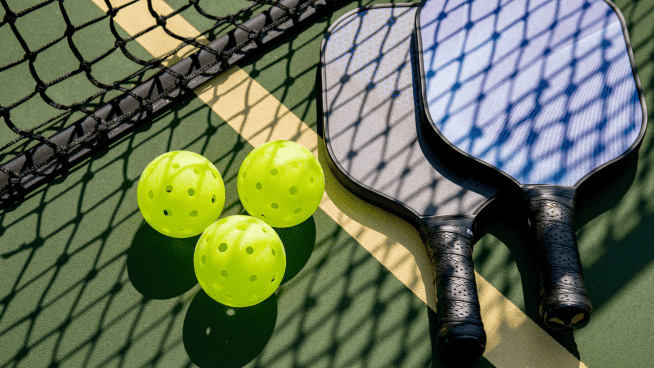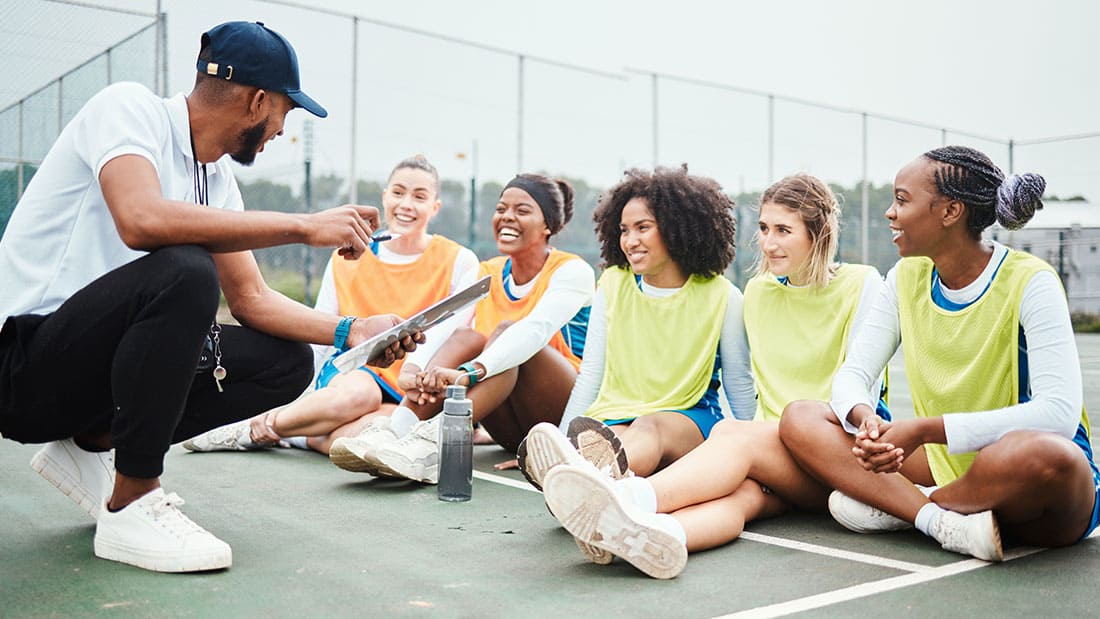The Two Missing Buckets in Female Youth Soccer: Speed and Strength
It is not the endurance that is missing, nor is it the ball work.
Though the soccer community pushes endless laps, conditioning runs timed miles, and skills nights within teams and club organizations, this is far from what players need.
Since youth soccer players are practicing several times a week with games on the weekend, it is safe to say they are already filling these buckets:
- Aerobic Fitness
- Change of Direction
- Agility
- Acceleration
- Sport Specific Skill
Looking at the use of technical drills, small-sided games, and large-sided scrimmages at practices, the two missing buckets in soccer player development are speed and strength.
These are crucial components to performance because one changes the game while the other keeps you in the game. Having blistering speed scores goals and infuses the game with the most exciting moments that make or break a win – from counterattacks to explosive movements past a defender to through runs past opponents. On the other end, having robust strength is what keeps youth players healthy. It allows them to handle the game’s demanding forces and dynamic actions – from cutting, jumping, decelerating, and changing direction.
How can youth coaches execute these two critical physical qualities in their practice sessions? Let us dive in.
Speed
Speed is a skill, and it takes far more than just running sprints. Of course, the nervous system needs to be exposed to maximal velocity work, namely, over 30 meters distance with a 2-minute rest. However, this is just glossing over the tip of the iceberg. Many professionals will say, “sprint fast to run fast.” While this is true, the technique still needs to be coached.
Coaching sprint mechanics requires painstaking attention to detail from the feet to the eyes. The mechanics that underpin the fastest athletes are these:
- Ball of foot strike
- Knee drive
- Upright torso
- Eyes forward
- Fast ground contact time
Chances are, if you are reading this, you might not be the world’s greatest track coach, but that does not mean fall into despair and not attempting to teach sprinting techniques at practices. It can be as simple as having your soccer players do movements that encompass the pieces, such as:
- Marching
- Skipping
- High Knee variations (to work on coordination)
- Rhythm and body position
Be sure to cue ball of foot strike and good posture so they can get a better knee drive. So long as they lift their chins and keep their eyes straight ahead, posture will fix itself.
Too, incorporating basic plyometrics, such as Hops, Bounds and Leaps work on ground contact time and fast-twitch muscle recruitment. After all, the fastest athletes have the shortest ground contact time in their strides and put the most force into the ground.
Sample Warm-Up Movements for Practice:
- Forward Marching x10 yard
- Forward Skipping x10 yards
- Lateral Bunny Hops x10 yards each
- Feet Chopping to Acceleration x10 yard
- Chest to Ground Acceleration x10 yard
Be sure to sprinkle training variability within these movements to work for new muscle groups and venture into a new plane of movements, as well as new rhythms:
Lateral A Skipping with Pause
Fast Scissor Marching
Beyond these warm-up movements, youth soccer players need to be exposed to actual max velocity sprinting during the week. The game on the weekend is not enough to train their bodies’ speed, as some players never reach full max velocity in a game (over 30 m distance), nor are the practices that work within 20×20 yard dimensions or less.
It is important to reach this over 30 meter distance for speed improvements and acceleration and “first step” improvements. After all, max velocity work can be considered acceleration training as the physiological threshold is raised by the greater distance and one accelerating more to reach full speed. Moreover, it is paramount to rest at least two minutes between sprints to train the proper energy system, and avoid turning the drill into a conditioning drill. Ideally, you want youth soccer players to sprint work consistently 1-2x a week year-round to see massive improvements over time.
When soccer player trains their nervous system to be fast off the ball, they will be fast on the ball:
Client Sprint and Goal
Strength
Getting youth soccer players in the gym is of utmost importance, especially as their bodies go through growth and maturation. Middle school age is one of the best times to begin taking advantage of the motor learning window and teaching them all of the strength movement patterns to be loaded one day:
Youth Female Athlete Reverse Lunge
The nervous system of the young soccer player is highly adaptable for this time period, so they need to be exposed to repetition of the movement patterns to nail them down. Once they master these, then they can continue to put on the muscle they need to handle the growing demands of the game.
Having muscular strength protects the joints from absorbing forces. Most non-contact ACL injuries occur a sudden cut or change of direction movement, and the knee will take on more load if the knee stabilizers (hamstrings and gluteals) are not strong enough.
Female Athlete Hamstring Strength
Stronger muscles allow for more advanced deceleration work in a controlled environment. Ensuring athletes co-contract the quadriceps, gluteals, and hamstrings to protect the knee and train proper kinematics:
Female Athlete Lateral ACL Prevention Training
Single Leg Rotational Jump for ACL
Of course, strength is the only foundation for these more advanced movements and the coordination, balance, and rhythm. The more a youth soccer player is coordinated and can remain balanced, the easier it is for them to learn the mechanics of landing and deceleration and better control their bodies in space. Strength is the icing on the cake for a longer career as the demands placed on kids become greater – more aggressive play, bigger and stronger opponents, and more ground covered with cutting and sprinting movements. Kids cannot go wrong with getting strong. The more an athlete can move their body efficiently, the more they will improve their speed and resilience. Put simply, performance enhancement and injury prevention are one in the same. Speed and strength are the two buckets that need to be touched on more in youth soccer practices so coaches are building faster and more durable athletes.
RECOMMENDED FOR YOU
MOST POPULAR
The Two Missing Buckets in Female Youth Soccer: Speed and Strength
It is not the endurance that is missing, nor is it the ball work.
Though the soccer community pushes endless laps, conditioning runs timed miles, and skills nights within teams and club organizations, this is far from what players need.
Since youth soccer players are practicing several times a week with games on the weekend, it is safe to say they are already filling these buckets:
- Aerobic Fitness
- Change of Direction
- Agility
- Acceleration
- Sport Specific Skill
Looking at the use of technical drills, small-sided games, and large-sided scrimmages at practices, the two missing buckets in soccer player development are speed and strength.
These are crucial components to performance because one changes the game while the other keeps you in the game. Having blistering speed scores goals and infuses the game with the most exciting moments that make or break a win – from counterattacks to explosive movements past a defender to through runs past opponents. On the other end, having robust strength is what keeps youth players healthy. It allows them to handle the game’s demanding forces and dynamic actions – from cutting, jumping, decelerating, and changing direction.
How can youth coaches execute these two critical physical qualities in their practice sessions? Let us dive in.
Speed
Speed is a skill, and it takes far more than just running sprints. Of course, the nervous system needs to be exposed to maximal velocity work, namely, over 30 meters distance with a 2-minute rest. However, this is just glossing over the tip of the iceberg. Many professionals will say, “sprint fast to run fast.” While this is true, the technique still needs to be coached.
Coaching sprint mechanics requires painstaking attention to detail from the feet to the eyes. The mechanics that underpin the fastest athletes are these:
- Ball of foot strike
- Knee drive
- Upright torso
- Eyes forward
- Fast ground contact time
Chances are, if you are reading this, you might not be the world’s greatest track coach, but that does not mean fall into despair and not attempting to teach sprinting techniques at practices. It can be as simple as having your soccer players do movements that encompass the pieces, such as:
- Marching
- Skipping
- High Knee variations (to work on coordination)
- Rhythm and body position
Be sure to cue ball of foot strike and good posture so they can get a better knee drive. So long as they lift their chins and keep their eyes straight ahead, posture will fix itself.
Too, incorporating basic plyometrics, such as Hops, Bounds and Leaps work on ground contact time and fast-twitch muscle recruitment. After all, the fastest athletes have the shortest ground contact time in their strides and put the most force into the ground.
Sample Warm-Up Movements for Practice:
- Forward Marching x10 yard
- Forward Skipping x10 yards
- Lateral Bunny Hops x10 yards each
- Feet Chopping to Acceleration x10 yard
- Chest to Ground Acceleration x10 yard
Be sure to sprinkle training variability within these movements to work for new muscle groups and venture into a new plane of movements, as well as new rhythms:
Lateral A Skipping with Pause
Fast Scissor Marching
Beyond these warm-up movements, youth soccer players need to be exposed to actual max velocity sprinting during the week. The game on the weekend is not enough to train their bodies’ speed, as some players never reach full max velocity in a game (over 30 m distance), nor are the practices that work within 20×20 yard dimensions or less.
It is important to reach this over 30 meter distance for speed improvements and acceleration and “first step” improvements. After all, max velocity work can be considered acceleration training as the physiological threshold is raised by the greater distance and one accelerating more to reach full speed. Moreover, it is paramount to rest at least two minutes between sprints to train the proper energy system, and avoid turning the drill into a conditioning drill. Ideally, you want youth soccer players to sprint work consistently 1-2x a week year-round to see massive improvements over time.
When soccer player trains their nervous system to be fast off the ball, they will be fast on the ball:
Client Sprint and Goal
Strength
Getting youth soccer players in the gym is of utmost importance, especially as their bodies go through growth and maturation. Middle school age is one of the best times to begin taking advantage of the motor learning window and teaching them all of the strength movement patterns to be loaded one day:
Youth Female Athlete Reverse Lunge
The nervous system of the young soccer player is highly adaptable for this time period, so they need to be exposed to repetition of the movement patterns to nail them down. Once they master these, then they can continue to put on the muscle they need to handle the growing demands of the game.
Having muscular strength protects the joints from absorbing forces. Most non-contact ACL injuries occur a sudden cut or change of direction movement, and the knee will take on more load if the knee stabilizers (hamstrings and gluteals) are not strong enough.
Female Athlete Hamstring Strength
Stronger muscles allow for more advanced deceleration work in a controlled environment. Ensuring athletes co-contract the quadriceps, gluteals, and hamstrings to protect the knee and train proper kinematics:
Female Athlete Lateral ACL Prevention Training
Single Leg Rotational Jump for ACL
Of course, strength is the only foundation for these more advanced movements and the coordination, balance, and rhythm. The more a youth soccer player is coordinated and can remain balanced, the easier it is for them to learn the mechanics of landing and deceleration and better control their bodies in space. Strength is the icing on the cake for a longer career as the demands placed on kids become greater – more aggressive play, bigger and stronger opponents, and more ground covered with cutting and sprinting movements. Kids cannot go wrong with getting strong. The more an athlete can move their body efficiently, the more they will improve their speed and resilience. Put simply, performance enhancement and injury prevention are one in the same. Speed and strength are the two buckets that need to be touched on more in youth soccer practices so coaches are building faster and more durable athletes.


